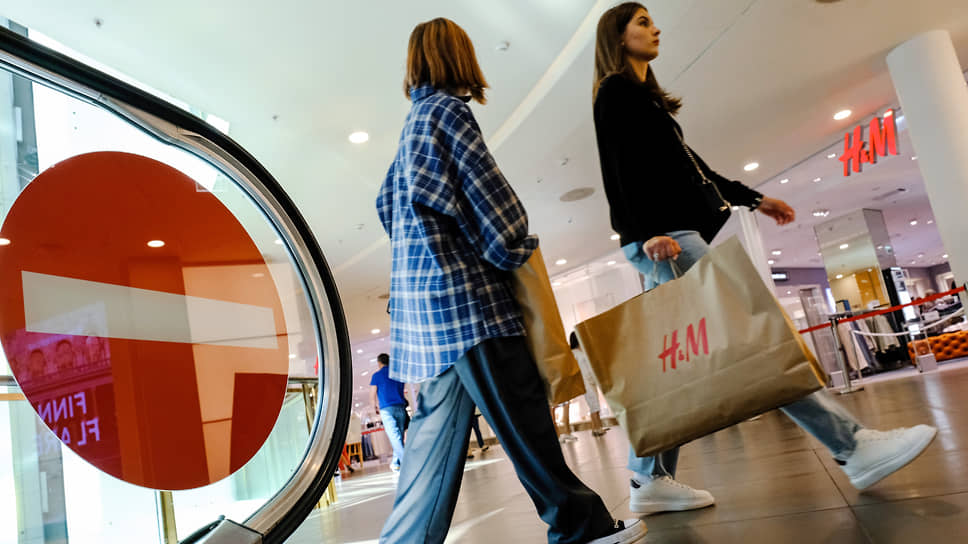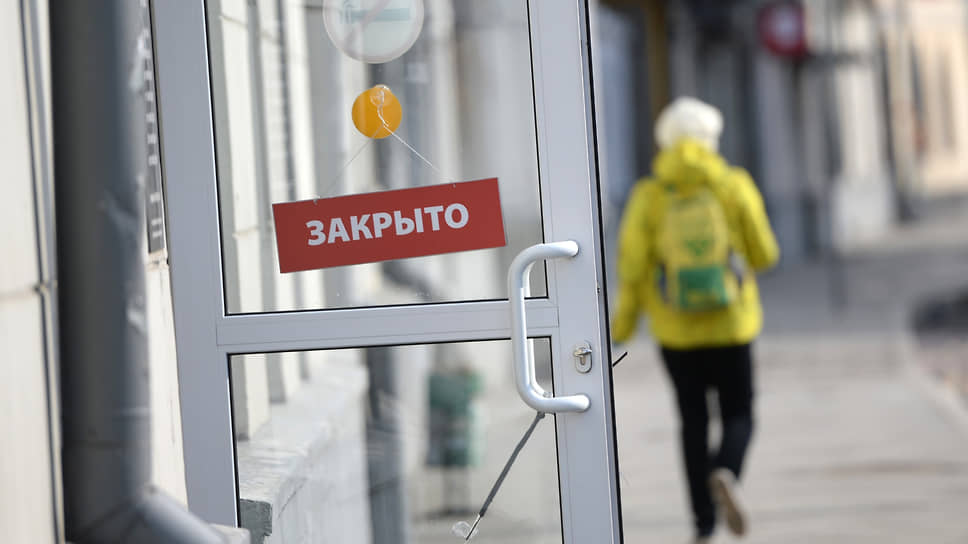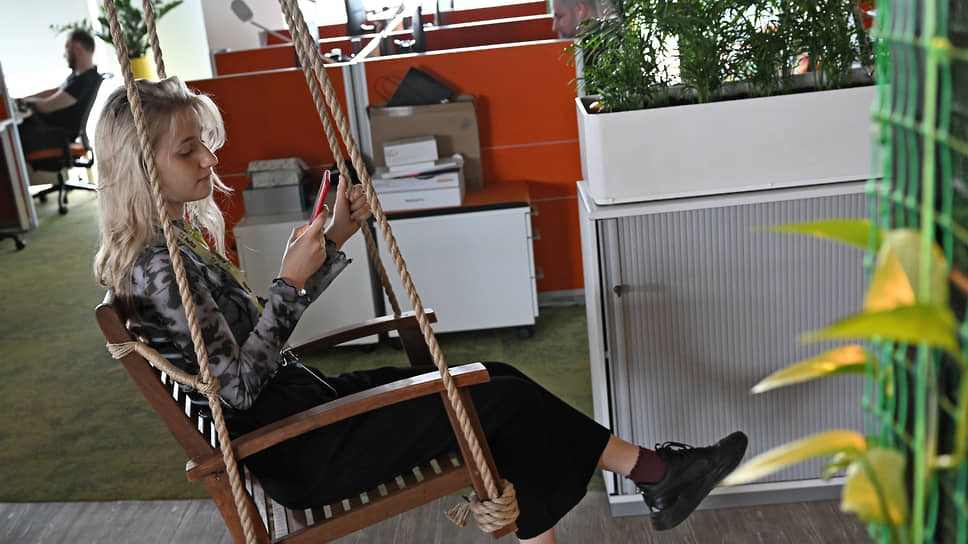Substitution reached stores – Business – Kommersant
[ad_1]
Decreased consumer activity and the departure of international brands contributed to the growth of vacancy in the shopping centers of Moscow and St. Petersburg. In the latter – to a record value. Now facility operators are actively replacing the stores of folded chains with retailers from Russia, Turkey and the post-Soviet countries. Activity in the office market is supported by companies with state participation and representatives of the oil and gas sector. Although developers are still in no hurry to launch new projects on it in the conditions of a general negative market situation.
The Mall Index (the number of visitors per 1,000 sq. m of retail space) in Moscow shopping centers in the first working week of 2023 (January 9–15) was 9% behind the same period last year, and 33% behind the pre-crisis 2019. Such data is provided by Focus Technologies. In St. Petersburg, similar gaps were 6% and 27%, respectively. Consumers continue to be negatively impacted by a general decline in purchasing power and a reduction in the range of stores of familiar foreign brands, analysts say.
New wave of tenants
The average vacancy rate in the shopping centers of Moscow, according to the estimates of the regional director of the retail real estate department of NF Group, Evgenia Khakberdieva, is 15.6%. During the year, the indicator increased by 1.9 percentage points, mainly due to the termination of contracts with outgoing international operators. In St. Petersburg, the dynamics turned out to be more revealing: according to NF Group, the volume of empty space increased by 6.3 percentage points over the year, to 10.6%. For the local market, this figure is an absolute record.
Nikoliers explains that a total of 95 brands of foreign retailers have suspended their work in Russia, 57 of which were also represented in the market of St. Petersburg. At the same time, the share of vacant space is also increasing due to the optimization of the least profitable stores of the players who retain their positions. The trend continues to put pressure on the market, but Ms. Khakberdieva draws attention to the process of replacing outgoing international brands. This contributes to the gradual expansion of the offer in the fashion segment: the premises of the once anchor tenants are often split up and rented out to several new players at once. Substitution occurs not only at the expense of domestic players.
Nikoliers notes that over the year 45 foreign brands announced their entry into the Russian market, nine of which have already opened their stores.
Mostly, according to consultants, retailers from Turkey (74% of announcements), Kazakhstan (7%), China and India (4% each), the USA, Armenia, Japan, Belarus and Italy (2% each) will appear on the market. Evgenia Khakberdieva points to a rather high activity in entering the Russian market of retail chains from Turkey and the countries of the post-Soviet space. But the opening of stores by new retailers, in her opinion, depends on the success of existing outlets.
Catering in popular locations
In the street retail segment of Moscow, according to R4S Group estimates, 7-10% of the space is now empty. Marina Markova, head of street retail at Magazin Magazin, does not rule out that the figure will decrease in the future due to the opening of showrooms by Russian designers and new catering concepts. But the positive dynamics may be delayed. Thus, Alena Volobuyeva, director of the market research department at Maris, draws attention to the fact that in the first quarter there is traditionally a seasonal increase in the share of vacant space.
R4S Group Commercial Director Irina Burenko states that liquid premises with good traffic on the Moscow market are still in short supply. As an example, the expert talks about an object at 15 Malaya Bronnaya Street. “During the three days of exhibiting the vacant premises, we received four offers from potential tenants,” she says.
On the shopping streets of St. Petersburg, the bulk of transactions, according to Alena Volobuyeva, traditionally form catering establishments. At the same time, a third of the facilities opened last year are in a budget format (these are cafe-bars, pizzerias, etc.). The presence of alcohol markets also continues to grow actively. But the demand from the federal FMCG chains, according to Ms. Volobuyeva, has noticeably decreased; Also, fewer drogerie chain stores, sports and leisure goods stores, etc., began to open.
Offices without developers
In the office real estate market in Moscow, according to NF Group estimates for last year, 9.1% of office space is empty. Kirill Babichenko, director of the CORE.XP office real estate department, suggests that in the first quarter, the vacancy rate in Moscow will reach 12%, after which growth will stop. In St. Petersburg, according to Alena Volobueva, 10.3% of quality office space is free. In physical terms, we are talking about 400 thousand square meters. m – for the year this figure has almost doubled. Vacancy growth, according to Ms. Volobuyeva, will also be observed in the first quarter of this year: offices are being vacated, the lease contracts for which the tenants wanted, but for some reason could not terminate ahead of schedule.
NF Group partner Maria Zimina explains that in Moscow the activity of potential tenants is likely to remain at a reduced level of last year; a significant share in the structure of demand will continue to be formed by companies with state participation.
Although the deputy director of the office real estate department at Nikoliers, Elena Medushushskaya, calls the existing market quite active, indicating that demand is higher than at the beginning of last year. The general director of NF Group in St. Petersburg Konstantin Losyukov points out that in his city the main drivers of demand are oil and gas companies and IT structures.
According to Ms. Volobuyeva’s estimates, rental rates for Class A offices in St. Petersburg decreased by 5% last year to RUB 2.03 thousand. for 1 sq. m per month. For class B premises, the indicator remained stable – 1.4 thousand rubles. for 1 sq. m per month. “Landlords don’t lower asking rents, but make individual offers depending on the request,” she notes. In Moscow, according to Elena Medushushskaya, there was also a rather slight decrease in rates, mainly in objects where they were previously overstated. Prices and a relatively low level of vacancy in the markets of the largest cities in the future can be kept by a limited volume of new supply.
Maria Zimina points out that 473 thousand square meters are planned for commissioning in Moscow this year. m of new office space. Formally, this is 39% higher than last year, but the final volume may be noticeably lower due to the influence of crisis trends, she warns. Ms. Medushevsky also points out that office projects are reluctant to announce, and previously announced ones are postponed.
In St. Petersburg, according to Mr. Losyukov, 220 thousand square meters are now planned for commissioning in 2023. m. Viktoria Goryacheva, Deputy Director of the Department of Services for Tenants and Office Real Estate at Nikoliers, calls the current economic situation decisive for office development: high inflation, rising construction costs and rapidly changing external conditions narrow the possibilities for launching the construction of business centers. Against this background, it does not expect a noticeable number of new projects to appear in the next two or three years.
[ad_2]
Source link








